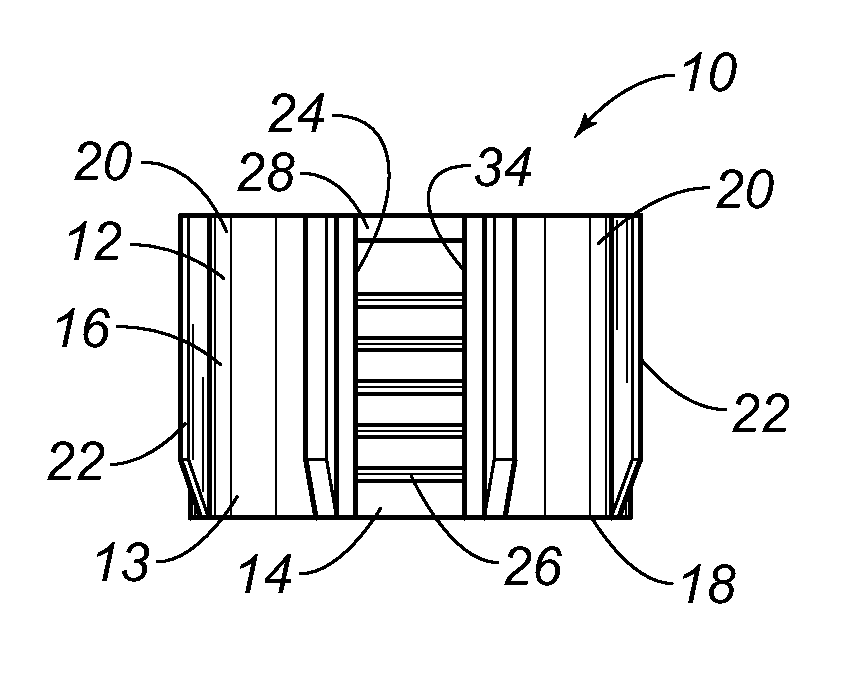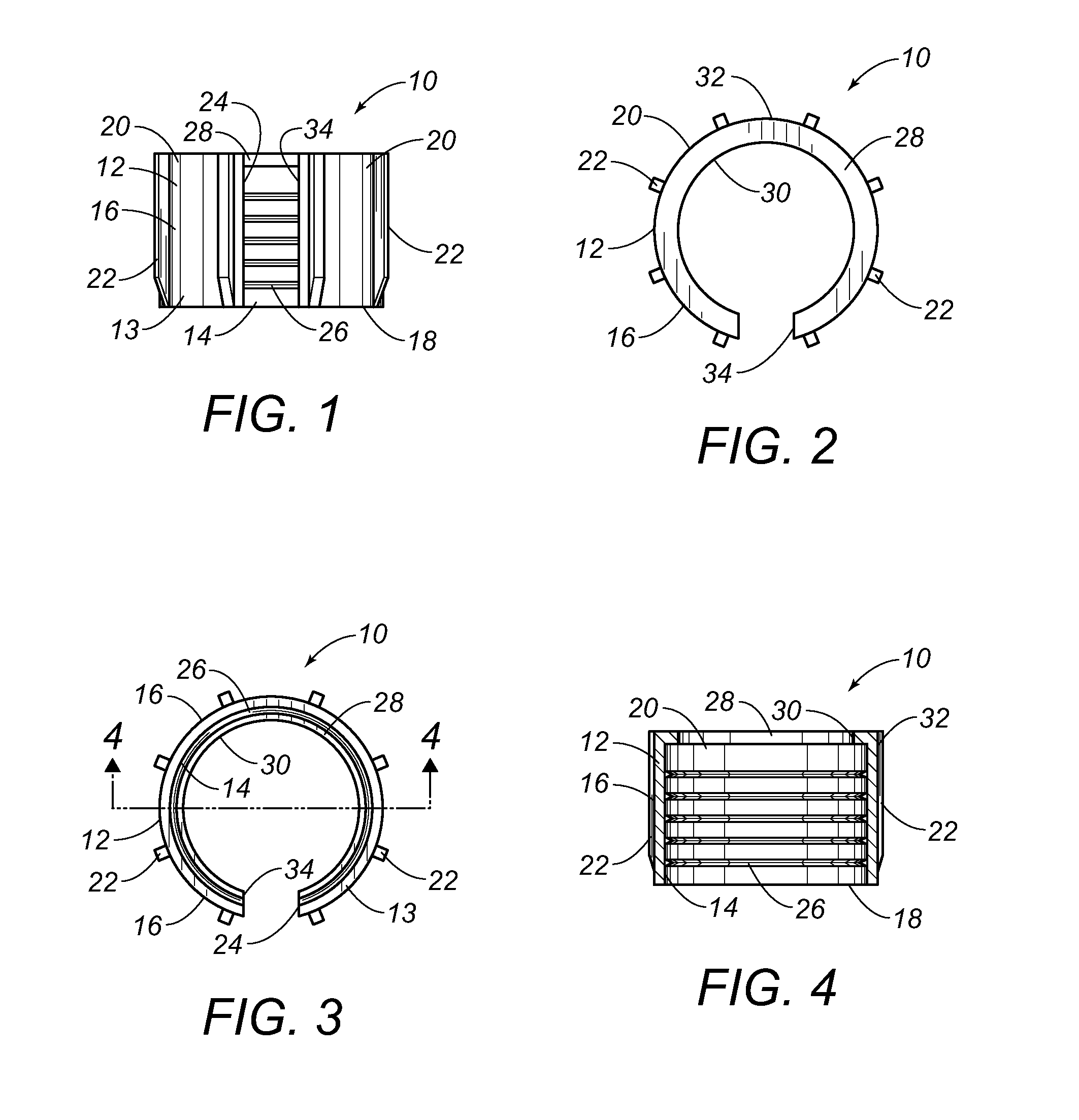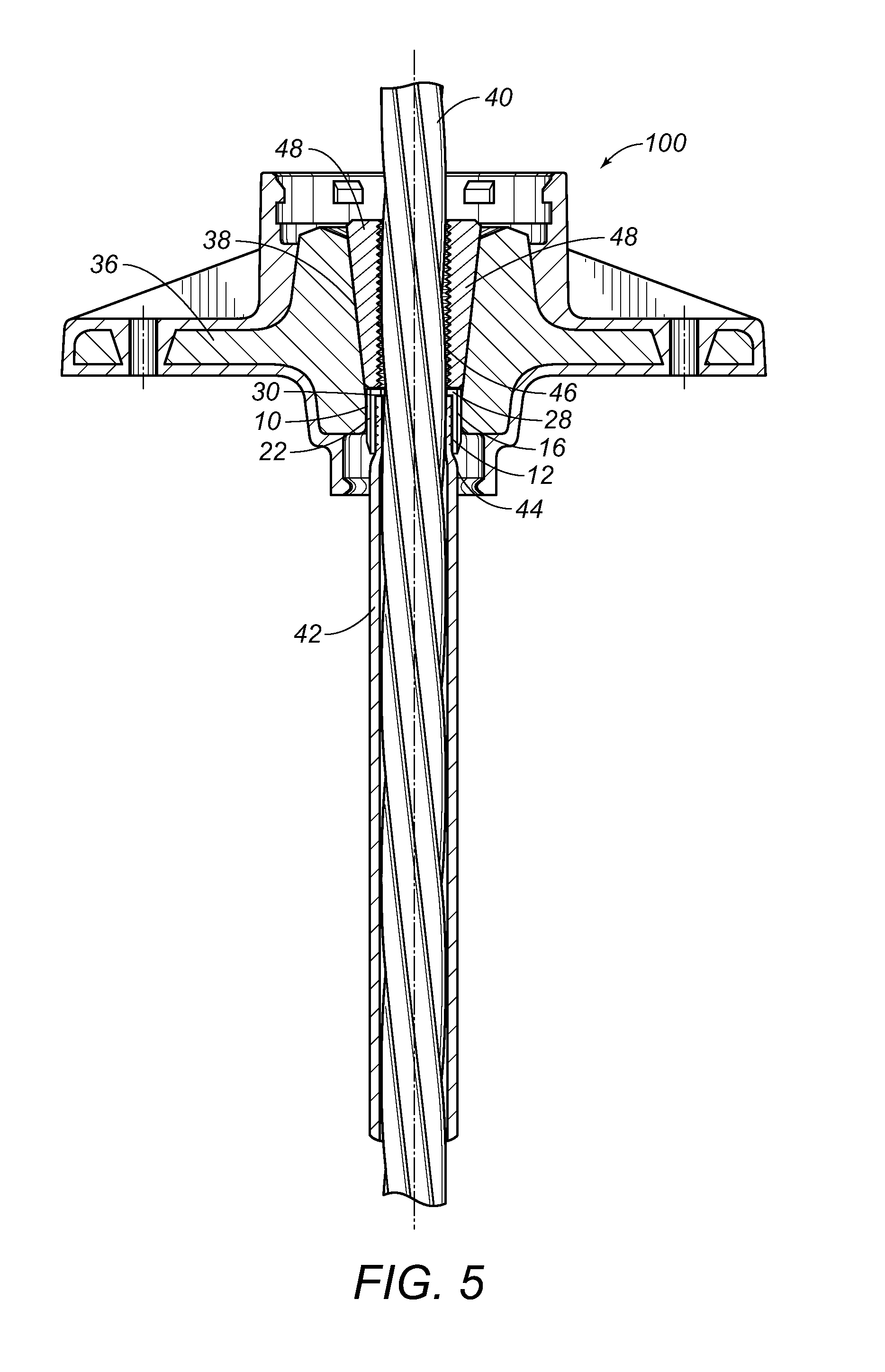Sheathing retaining cap
a technology of retaining cap and sheathing, which is applied in the direction of couplings, rod connections, manufacturing tools, etc., can solve the problems of weak structural concrete, inability to carry significant tensile loads, and method that does not use the full potentialities of concr
- Summary
- Abstract
- Description
- Claims
- Application Information
AI Technical Summary
Benefits of technology
Problems solved by technology
Method used
Image
Examples
Embodiment Construction
[0050]Referring to FIG. 1, there is shown a side elevational view of the sheathing retaining clip 10 of the present invention. The sheathing retaining clip 10 has a tubular body 12 that has an inner surface 14, an outer surface 16, a first end 18, and a second end 20. The tubular body 12 is substantially circular in shape. A plurality of fins 22 extend radially outwardly from the outer surface 16 of the tubular body 12. The continuous wall 13 of the tubular body 12 is broken by a longitudinal split 24 that extends from the first end 18 to the second end 20 of the tubular body 12. As can be seen, the fins 22 extend from the first end 18 to the second end 20 of the tubular body 12. Each of the fins 22 has a height that increases from the first end 18 to the second end 20 of the tubular body 12 or, at least, has a portion that increases in height from the first end 18. Locking ribs 26 are located on the inner surface 14 of the tubular body 12. The locking ribs 26 extend radially inward...
PUM
 Login to View More
Login to View More Abstract
Description
Claims
Application Information
 Login to View More
Login to View More - R&D
- Intellectual Property
- Life Sciences
- Materials
- Tech Scout
- Unparalleled Data Quality
- Higher Quality Content
- 60% Fewer Hallucinations
Browse by: Latest US Patents, China's latest patents, Technical Efficacy Thesaurus, Application Domain, Technology Topic, Popular Technical Reports.
© 2025 PatSnap. All rights reserved.Legal|Privacy policy|Modern Slavery Act Transparency Statement|Sitemap|About US| Contact US: help@patsnap.com



